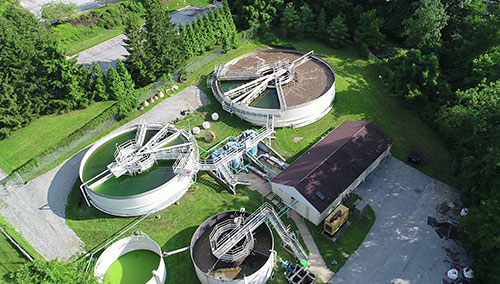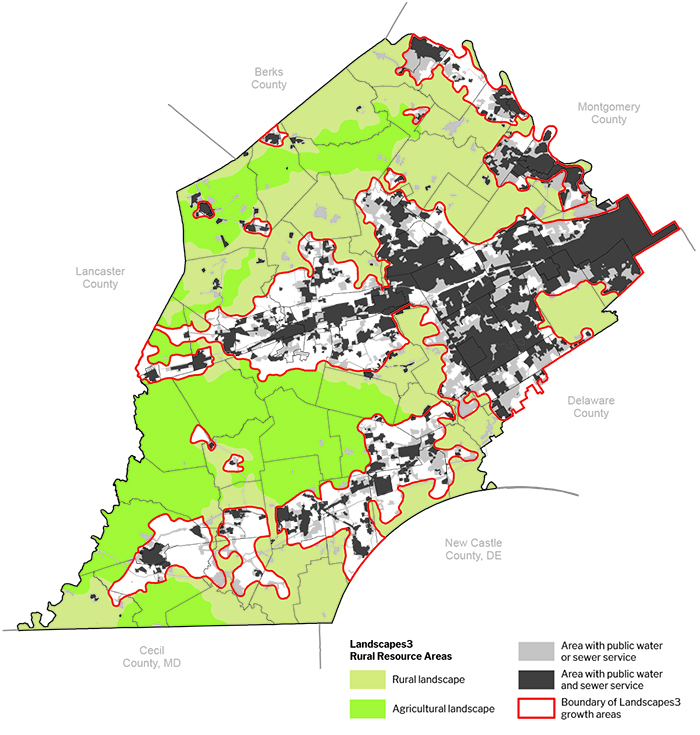Implementation — How we Connect
⑩Integrate water, sewer, and land use planning
Explore methods to improve coordination of long range planning goals for water and sewer infrastructure with land use planning.

Why:
The inclusion of all stakeholders in the policy-making process for sewage facilities, water infrastructure, and land use planning can significantly enhance the goal of reaching mutually desirable outcomes.
How:
The extension of water and sewer infrastructure, maintenance of existing infrastructure, source water protection, and the location of growth and preservation areas are key considerations in policy-making and long range planning efforts. As part of this process, municipalities should be encouraged to inventory, evaluate, and prioritize all water, wastewater, and stormwater infrastructure as the basis for implementing capital improvements, with a focus on maintenance and modernization. This recommendation can be supported through comprehensive plans and zoning ordinance updates that incorporate stakeholder coordination in the update process. Stakeholders include municipalities, water and sewer authorities, private suppliers and operators, state and federal agencies, regional planning and economic development groups, and related county departments. Additional means for facilitating stakeholder discussions to coordinate growth policies with service areas will also be explored.
Coordinated Water, Sewer, and Land Use
Coordinated planning of water, sewer, and other infrastructure is important to guide development to designated growth areas and away from areas targeted for preservation. Priority for new development within growth areas are those locations where both water and sewer service are available, followed by areas where either sewer or water service is available. Extension of sewer or water service outside of the growth areas should be avoided except where needed to address health or safety concerns. View larger map
